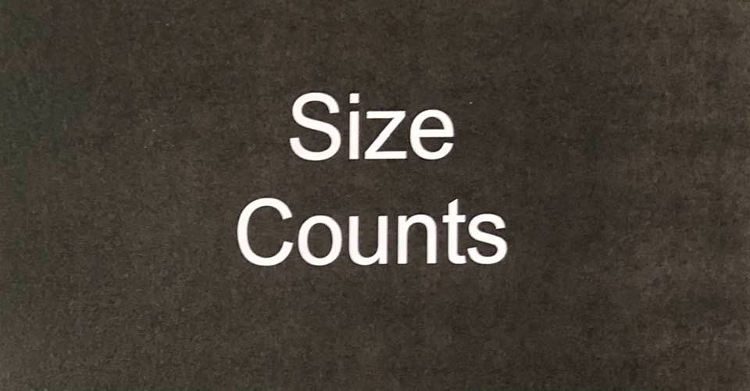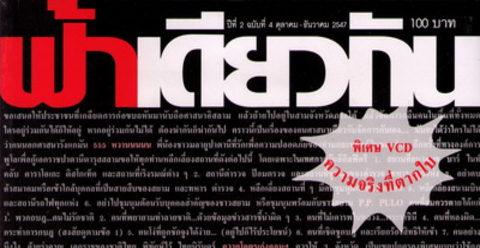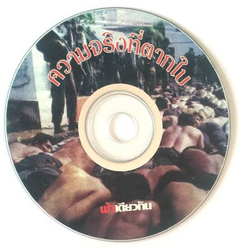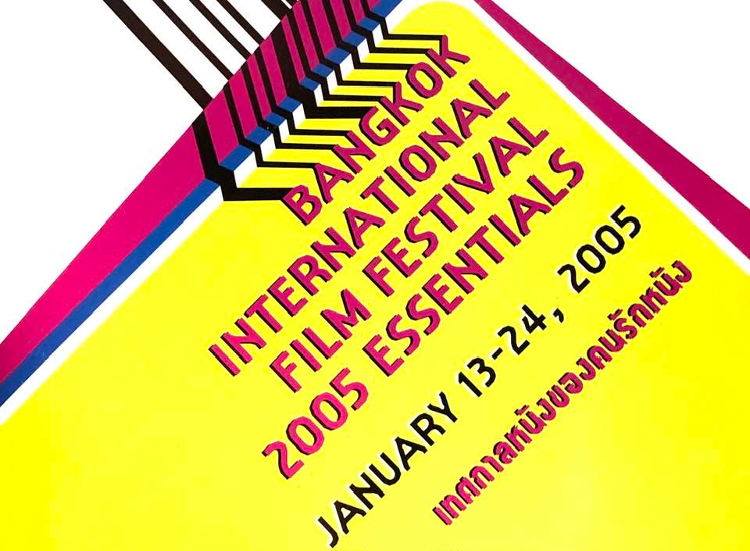Taschen has reprinted the 1665 Latin edition of the Atlas Maior, combining the original eleven volumes into a single folio (titled Atlas Maior Of 1665: The Greatest & Finest Atlas Ever Published). Blaeu's ornate Baroque engravings are beautifully reproduced, and introduced by Peter van der Krogt. He contributed to The History Of Cartography: Cartography In The European Renaissance Part II, which describes the Atlas Maior as "a fiercely coveted status symbol among wealthy patricians" - an extravagant collector's item, now available in a more accessible form thanks to Taschen's lavish reprint.
21 December 2005
Atlas Maior
Taschen has reprinted the 1665 Latin edition of the Atlas Maior, combining the original eleven volumes into a single folio (titled Atlas Maior Of 1665: The Greatest & Finest Atlas Ever Published). Blaeu's ornate Baroque engravings are beautifully reproduced, and introduced by Peter van der Krogt. He contributed to The History Of Cartography: Cartography In The European Renaissance Part II, which describes the Atlas Maior as "a fiercely coveted status symbol among wealthy patricians" - an extravagant collector's item, now available in a more accessible form thanks to Taschen's lavish reprint.
17 December 2005
Nine Great Movies from Nine Decades

(Decalogue is a series of ten films, so there are technically more than nine titles on the list.) Corliss and Schickel’s Nine Great Movies from Nine Decades appeared in the 30th May issue of Time (vol. 165, no. 22). Their full list of 100 titles was published online and reprinted in the Encyclopædia Britannica Almanac.
07 December 2005
1001 Movies
You Must See Before You Die
The new 2005 edition still has 1001 films, thus the new additions have resulted in an equal number of deletions. A handful of (mostly recent) films have been replaced, including, unfortunately, Eyes Wide Shut and Tetsuo. The new entries are all recent, too, including Hero, Oldboy, The Passion Of The Christ, and The Lord Of The Rings.
05 December 2005
My Favourite Film
1. The Lord Of The Rings I-III
2. Amelie
3. Blade Runner
4. The Shawshank Redemption
5. Donnie Darko
6. Star Wars IV: A New Hope
7. Pulp Fiction
8. The Princess Bride
9. Gone With The Wind
10. Fight Club
03 December 2005
Art Of The Devil II
The violence was as gory as I'd expected. More so, actually, because the piece de resistance at the end, when a young man's skin is slowly flayed off with a blowtorch, was unexpected. In another set-piece scene, geckos burrow bloodily out of a man's body. The plot, in which a seemingly angelic woman is revealed to be an insane cannibal and murderer, and the protracted torture scenes, are vaguely reminiscent of Audition.
There is a clever twist at the end, and, unlike cop-out Hollywood horror films, there are refreshingly no survivors. Although the final twist is explicitly designed to explain the background to the plot, it does not offer any explanation for the utterly evil nature of three central characters. This suggests that melodrama took precedence over character motivation, though that would be my only criticism of this gruesome and fun film.
30 November 2005
Live 8
29 November 2005
Ken Adam
The Art Of Production Design
Amazingly, Adam says that "a few years ago" he was taken to the British Film Institute archive in London where he watched the custard-pie-fight epilogue from Dr Strangelove. This sequence, which Kubrick removed from the film at the last minute, had always been considered lost or destroyed, though Frayling's book appears to confirm for the first time that the scene is still extant.
26 November 2005
Full Metal Jacket Diary
15 November 2005
Confessions On A Dance Floor
The album's complete track-listing is: Hung Up, Get Together, Sorry, Future Lovers, I Love New York, Let It Will Be, Forbidden Love, Jump, How High, Isaac, Push, and Like It Or Not. A deluxe edition contains the bonus track Fighting Spirit. An extra song, History, is available as the B-side to the single Jump. An additional track, Superpop, is available as a download for members of Madonna's Icon fan club.
11 November 2005
Weekendavisen
20 October 2005
The 100 Greatest Movies Of All Time
1. GoodFellas
2. Vertigo
3. Jaws
4. Fight Club
5. The Godfather II
6. Citizen Kane
7. Tokyo Story
8. Star Wars V: The Empire Strikes Back
9. The Lord Of The Rings I-III
10. His Girl Friday
11. Persona
12. Chinatown
13. Manhattan
14. Taxi Driver
15. It's A Wonderful Life
16. The Apartment
17. Once Upon A Time In The West
18. All About Eve
19. The Texas Chainsaw Massacre
20. Apocalypse Now
21. Crash
22. Sunrise
23. The Godfather
24. Rear Window
25. Sunset Boulevard
26. The Third Man
27. Some Like It Hot
28. Raging Bull
29. The Rules Of The Game
30. Reservoir Dogs
31. Pat Garrett & Billy The Kid
32. Children Of Paradise
33. Star Wars IV: A New Hope
34. The Searchers
35. A Matter Of Life & Death
36. 2001: A Space Odyssey
37. Touch Of Evil
38. Badlands
39. Monty Python & The Holy Grail
40. ET: The Extra-Terrestrial
41. The Last Picture Show
42. One Flew Over The Cuckoo's Nest
43. Heat
44. Annie Hall
45. Mean Streets
46. Nashville
47. Blade Runner
48. Singin' In The Rain
49. Pulp Fiction
50. It Happened One Night
51. Aliens
52. Sullivan's Travels
53. The Deer Hunter
54. Miller's Crossing
55. Kiss Me Deadly
56. The Shawshank Redemption
57. Sweet Smell Of Success
58. Die Hard
59. Blue Velvet
60. The Outlaw Josey Wales
61. Halloween
62. The Night Of The Hunter
63. The Matrix
64. The Conversation
65. 8½
66. Seven
67. L'Atalante
68. This Is Spinal Tap
69. Sideways
70. Dawn Of The Dead
71. North By Northwest
72. The Terminator
73. Hoop Dreams
74. Raiders Of The Lost Ark
75. The Wild Bunch
76. Close Encounters Of The Third Kind
77. Lawrence Of Arabia
78. The Graduate
79. The Wicker Man
80. Day For Night
81. The Shining
82. Eternal Sunshine Of The Spotless Mind
83. The Wizard Of Oz
84. Metropolis
85. The King Of Comedy
86. Kind Hearts & Coronets
87. Donnie Darko
88. Get Carter
89. Rio Bravo
90. Psycho
91. Decalogue I-X
92. Back To The Future
93. Salvador
94. Magnolia
95. The Usual Suspects
96. Stand By Me
97. Trainspotting
98. Casablanca
99. Three Kings
100. Goldfinger
02 October 2005
Jyllands-Posten
09 September 2005
Rashomon
The plot is, at least initially, uncomplicated: a woman is raped by a bandit and her husband is killed. Also, the film has only three locations: the wood where the rape and killing take place, an open-air court where witnesses describe the events, and a derelict building in which the situation is discussed during a rainstorm. The action begins in medias res, like many of Kurosawa's narratives.
What the director does with this simple scenario is quite amazing: he presents the narrative in flashback, from the perspectives of four different people as reported by others. Each version of the events is different, as each one favours its own self-serving and unreliable narrator. We are never told which, if indeed any, of these versions is entirely true, though we are left with the clear awareness that truth itself is highly subjective. We may doubt the veracity of many of the characters, though the film is ultimately optimistic, with the rainstorm ending and an abandoned baby being cared for.
Toshiro Mifune stars as the proud yet naive bandit. He recounts what he regards as his noble actions, though, in one version of events, the woman escapes after he begs her to marry him. Her surprisingly stoical husband reacts calmly to everything around him though is also a skilled samurai swordsman. His wife is alternately terrified and dominant, screaming in fear though later mocking the two men for their lack of verility. So, each version of the story presents a different interpretation of the characters.
In the wood where the central events take place, the sun shines through the trees creating a dappled light like Pierre Auguste Renoir's painting Moulin De La Galette. Kurosawa also films the sun itself, glinting between the trees; he was apparently one of the first directors to point his camera directly at the sun, and when he does so in Rashomon the effect is beautiful and natural.
22 August 2005
Black God, White Devil
Rocha was the most influential director of Brazil's New Cinema movement in the 1960s, and this was his first internationally-famous film, but the earlier social realist New Cinema films are arguably more important than the theatricality of Black God, White Devil.
20 August 2005
The 50 Greatest Films Of All Time
- All About Eve
- Amarcord
- Annie Hall
- Blow-Up
- Bonnie & Clyde
- Breathless
- Bringing Up Baby
- Casablanca
- Chinatown
- Citizen Kane
- The Conformist
- Die Hard
- Dirty Harry
- Double Indemnity
- Dumbo
- The General
- The Godfather
- The Godfather II
- Goldfinger
- The Gold Rush
- Gone With The Wind
- GoodFellas
- The Graduate
- Grand Illusion
- It Happened One Night
- It's A Gift
- Jaws
- Lawrence Of Arabia
- Mildred Pierce
- National Lampoon's Animal House
- North By Northwest
- Now Voyager
- Old School
- Paths Of Glory
- Psycho
- Red River
- Reds
- Rome: Open City
- The Rules Of The Game
- Seven Samurai
- The Seventh Seal
- Singin' In The Rain
- Some Like It Hot
- Stagecoach
- Sullivan's Travels
- Sunset Boulevard
- Toy Story
- Trouble In Paradise
- 2001: A Space Odyssey
- The Wild Bunch
- The Wizard Of Oz
- The Women
Classical Hollywood lists:
Golden Age films like Gone With The Wind and The Wizard Of Oz, selected by nostalgic film critics with rose-tinted glasses.
World cinema lists:
arthouse films like Pather Panchali and Seven Samurai, which are selected by film directors simply because they always have been.
New Hollywood lists:
American cinema 1970s+, like Star Wars and The Godfather, which appear at the top of lists voted for by the public.
Of these main types, the Vanity Fair one is closest to the 'Classical Hollywood' list. It emphasises classic Hollywood films like Casablanca, Stagecoach, and The Wizard Of Oz. It also finds room for Animal House and Die Hard, though, which is almost criminal considering the films it leaves out (Apocalypse Now, A Streetcar Named Desire...). There are only eight foreign-language films, which is nowhere near enough.
Citizen Kane and Battleship Potemkin are almost obligatory on lists like this - if a 'greatest films of all time' list doesn't include these, it can't really be a credible list. Personally, I think 2001: A Space Odyssey and Psycho should also be obligatory, too.
Howard Hawks, Francis Coppola, Victor Fleming, Billy Wilder, Michael Curtiz, Jean Renoir, Alfred Hitchcock, and Stanley Kubrick are the only directors who appear twice in the list. I think, in addition, Akira Kurosawa and Orson Welles each deserve another entry.
Fritz Lang and Sergei Eisenstein don't appear here at all, because silent cinema is very under-represented. The only silent films included are the comedies The General and The Gold Rush. This is a shame, considering the many experimental silent films available to choose from. I know Vanity Fair is a glamour magazine not an academic journal, but Un Chien Andalou, Metropolis, Cabinet Of Dr Caligari, and Battleship Potemkin are far more important silent films than the two they chose.
There aren't precisely fifty films on this list - they admit that they (inexplicably) included Old School as an extra guilty pleasure, and (like many such lists) they treat The Godfather and The Godfather II as a single film. Note, by the way, that there are two films called Some Like It Hot: the one on this list is the 1959 comic masterpiece, not the obscure 1939 comedy.
29 July 2005
The Sun
The article said: "JUSTIN Timberlake's bride-to-be Cameron Diaz has been caught snogging a married man. The Hollywood babe, 32, was spotted in a clinch with the TV producer while her pop star fiancée prepared to go into hospital for a throat operation. Witness Oscar Duran said: 'Cameron wrapped her arms around the guy and started kissing him on the mouth. They stood kissing for a good three minutes.' Cameron and producer Shane Nickerson, 33, who works on her MTV travel show Trippin have enjoyed more than just a professional relationship, according to a US magazine. Mr Duran told how he saw the pair emerging from the Oracle Post studio in Santa Monica where Trippin is dubbed and stop behind bushes in broad daylight. He said: 'They seemed to glance around to see if anyone was watching.' Mr Duran confessed: 'I was surprised they would stand there in public on the sidewalk kissing.' Nickerson's wife Elisa is a high school teacher. They have a one-year-old daughter Lucy."
28 July 2005
Size Counts:
A Celebration of the Erection

10 July 2005
The Stanley Kubrick Archives
If a book's weight is any indication of its quality (and it often is), then The Stanley Kubrick Archives is very good indeed, weighing 5kg. This lavish, folio-sized book begins with frame-enlargements from each of Kubrick's films from Killer's Kiss (under its working title Kiss Me, Kill Me) to Eyes Wide Shut. Unfortunately, this section is problematic for a couple of reasons: it omits Fear and Desire (the feature debut that Kubrick later disowned), and it lists incorrect aspect ratios for three films. (Paths of Glory's correct ratio is 1.66:1, Lolita's alternates between 1.33:1 and 1.66:1, and Barry Lyndon's is 1.66:1).
The second half of the book presents "the nuts and bolts of Kubrick's creative history." This is a treasure trove for Kubrick fans, illustrated with more than 800 photographs, script pages, and props. There are also reprints of selected Kubrick interviews, and new essays by Gene D. Phillips, Rodney Hill, and Michel Ciment. Each copy of this (admittedly expensive) book also comes with a CD recording of an interview Kubrick gave to Jeremy Bernstein on 27th November 1966, and a strip of twelve frames from Kubrick's personal 70mm print of 2001: A Space Odyssey.
04 June 2005
The Jaws Log (expanded edition)
A 25th anniversary edition appeared in 2001, with new introductions by Peter Benchley (author of the Jaws novel) and Gottlieb, and a selection of on-set photographs; the book's main text was not altered, though extensive footnotes were added. For the 30th anniversary edition, Gottlieb has written a short foreword, though there's no other additional material.
04 May 2005
The Poseidon Adventure
One of the highlights comes when Gene Hackman realises that, if they propped up a large Christmas tree, they could climb up it and reach a ledge that led to a potential exit. He convinces a small group to climb up, but most of the others won't listen to him. He tries one last time to make them see sense, but they still ignore him. So he climbs up the tree himself, and, from the ledge, he pauses to look down contemptibly at them. Then there's an explosion, and the scene below him looks like Sodom and Gomorrah in hell - a writhing mass of burning people. Hackman turns his back on them and goes through a door to safety... and then he closes the door behind him!
It's one thing to turn his back on them, but closing the door on them as well seems a bit harsh. (Hackman's character is a priest, after all.) It's a very funny moment, though, and the film is worth seeing despite most of the acting (apart from Hackman and Shelley Winters) being a bit ropey. It also has Leslie Nielsen as a deadpan ship's captain at the start, so you think it's going to be a parody but in fact it isn't (not intentionally, anyway).
07 April 2005
Book On The Beach
07 March 2005
Book On The Beach
03 March 2005
Cumhuriyet
In solidarity with Kart, on 24th February the magazine Penguen printed caricatures of Erdoğan as a variety of animals on its front cover. Predictably, Erdoğan has also filed a lawsuit against the magazine.
07 February 2005
Book On The Beach
06 February 2005
Seeds Of Peace
The article, on pages 6-9, has no byline except for the initials BP. It discusses the unexplained death of King Rama VIII: "As for the killing of Ananda, officially it remains an unresolved mystery. In Thailand where even a hint of criticism of the monarchy is a serious criminal offense, inquiries are actively discouraged."
Sulak previously discussed the case in his book เรืองนายปรีดี พนมยงค์ ตามทัศนะ ส. ศิวรักษ์, in which he quotes from a 1948 diplomatic cable from the American ambassador reporting Phibun Songkhram's private comments on the matter. The book was later published in English translation as Powers That Be: Pridi Banomyong Through The Rise And Fall Of Thai Democracy.
09 January 2005
Tak Bai


07 January 2005
2005 Bangkok International Film Festival

